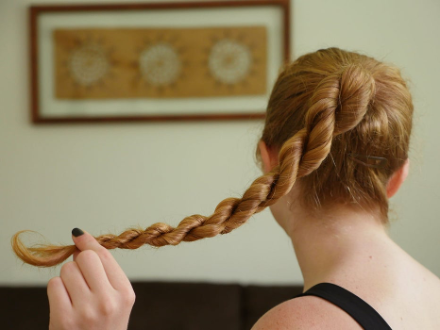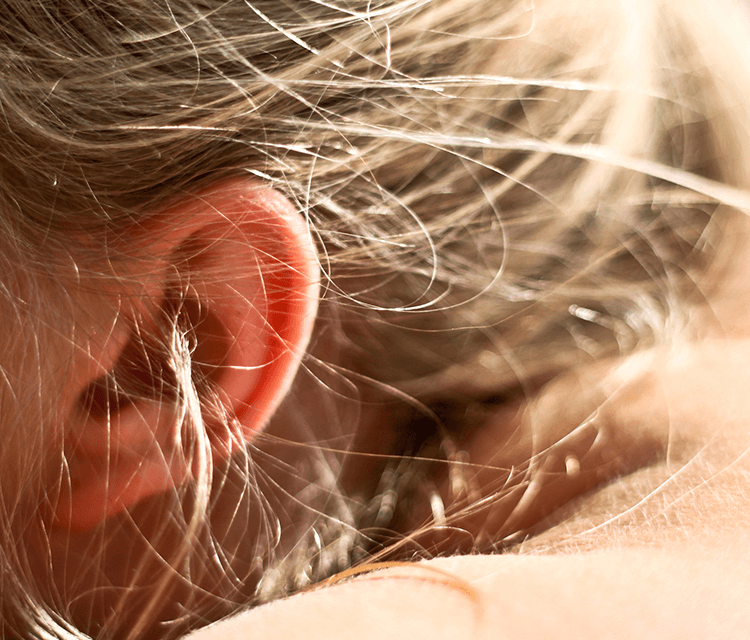When your head itches the first question many parents, carers, grandparents, and teachers ask themselves is – is it head lice? The truth is it might be, but it could also be a multitude of other things. The best approach is to check the hair and the scalp to potentially eliminate whether it is head lice or not, and if it isn’t then to work through the other possibilities. Here are the main reasons why your scalp might be itchy.
Causes of itchy scalp
The fear and loathing of head lice makes us all jump to the conclusion that our hair is full of the critters if we have an itchy scalp or find something in our children’s hair. That is not always necessarily the case because an itchy scalp can be indicative of many things (not just nits!). There are other problems that can be found in the hair which make us itch, but if you are still unsure always get in contact with a professional.

DEC Plugs
If you’re experiencing an itchy scalp and noticing small specks on your scalp you may have over dried your scalp. The term stands for desquamated epithelial cells. These are creamy white fat cells excreted from the oil glands in the scalp. They are not attached to the hair but instead sit on the scalp and can be easily moved by your finger or comb.
These oil glands can often work overtime if the scalp is attempting to compensate for the drying effects of the chemical head lice treatment. Therefore leading to an overhaul of lots of little ‘plugs’ on the scalp.

Hair casts
Hair casts are hair root sheaths that have not disintegrated or fell off. They stay on the hair shaft and become visible as they encircle the hair strand. These look very different to head lice, they are cylinder shaped, white. You can easily dislodge and removed hair casts by using the pads of your fingers and sliding them off the hair easily.
Dandruff
Dandruff occurs when the skin on the scalp becomes irritated and flakes off. These flakes generally sit on the scalp and fall off easily if you itch or shake the hair. Dandruff can also cause mild itchiness and irritation. A more severe form of the condition, when the skin becomes inflamed, is called seborrheic dermatitis. Dry scalp is different from dandruff. Dandruff flakes are bigger and they look oily. Dandruff can be solved with many specially formulated shampoos and hair care products.
In comparison to…
Nits or Head Lice Eggs
Nits are laid near the base of the hair root and are seriously stuck to the hair shaft. As the hair grows the nit remains firmly attached. Unlike dandruff or DEC plugs they are not on the scalp. Unlike hair casts they are firmly glued to the hair shaft and therefore nits cannot slide off the hair easily.
The glue is wrapped around the hair shaft to ensure the egg is stable. Nits are always the same teardrop shape – they are never irregular in shape. When nits are laid, they are invisible sacks of liquid but as the embryo develops the egg becomes visible.
The developing head louse feeds off keratin and so absorbs the colour of the hair, which enables it to better camouflage itself. When the nit or egg is white it is generally because the louse has hatched, and the egg sheath has dried out.

Head Lice
Head lice come in a range of sizes as they grow through the developmental cycle. What distinguishes them at each of these stages are their 6 legs. New-born baby lice are tiny and transparent before they take their first blood meal (these are hard to spot for the untrained eye). After they feed, they are bright red until that blood oxidises and that’s when they become brownish. As they grow, they become a darker brown.
Fully grown adult lice can become quite dark in colour and are about the size of a sesame seed. They feed off your blood so can be found primarily crawling around on the scalp. They move quickly – up to 23 cm in a minute, have 6 legs, each with a serious claw at the end to enable them to firmly hold on to the hair.
Head lice can certainly make you itch like crazy. When they feed, they inject their saliva which enables them to dilute the blood with an anticoagulant. If you are allergic to that saliva (and 53% of people aren’t) then it will make you itch. If you are searching for head lice then be organised and divide the hair into sections, working section by section with a long-toothed metal nit comb taking it through the hair from the scalp and out through the ends.
Wipe the nit comb onto white toilet paper and examine what you have taken out. Head lice have six legs, are very small and can vary from light to dark according to their age. The eggs are tear-dropped shaped and are glued onto the hair shaft. Have a look in the hair near the scalp as the fresh eggs are laid near the root of the hair. The eggs are camouflaged to match the colour of the hair so you will have to look carefully. The eggs change colour over time and the empty eggs are whitish in colour.
Head lice products
Head lice products or treatments can irritate the scalp and cause an itching reaction. The scalp is highly permeable and can be very sensitive when under assault by nit combing and head lice products. The pesticide-based products may cause a reaction. The dimethicone based products will dry out the scalp, and the more you use, the drier your scalp will become, more than likely giving you a dose of dandruff in the process.
Medication
People often forget about the side effects of medication. If you are taking medication and your scalp starts itching check to see if it is head lice first and if you don’t then look at the medication guide, the paper leaflet that comes with the prescription that describes the role of the medication and all the potential side effects. Itching is a common side effect of taking medications.
Hair dye can also cause an itchy scalp
Hair dye can cause an itchy reaction on the scalp if there is any kind of allergic reaction. You should have been encouraged to do a patch test by the hairdresser, and if you are dying your hair yourself the product you use will have also asked you to do one. As an aside hair dye will not kill head lice or their eggs, the nits, so don’t rely on it to sort out a head lice infestation. If you are not sure you have had a reaction to the hair dye do a patch test with it on your skin or go back to the hairdressers and ask them to do one for you.
Change in use of hair products
A change in the use of hair products can cause an itchy reaction. So, if you have eliminated head lice as the cause of the itching then consider which hair products you have been using. If you have started using a new product that you haven’t used before then eliminate it from your routine and see if the itching stops. If you have added further hair products to your regime, stop using them for a while and see if that makes a difference. The point is to stop one at a time to work out if it is creating a reaction that makes you itch.
Climate
As the seasons change so our body can have a reaction to them. Sometimes we can ache or sneeze or itch. It may be your body is adjusting in some way. This will hopefully go away as the body becomes familiar with the heat or the cold, or whatever climatic change it is becoming familiar with again. This is something you will just have to monitor.
Psoriasis, dermatitis or eczema
Skin is a living, sensitive thing and can have certain angry reactions that run deep. It may be that you have psoriasis, dermatitis or eczema. This can be analysed and diagnosed by your GP or a dermatologist and requires you to use special cremes or lotions for your skin – and scalp is skin. If you have any of these conditions, it is advisable that you avoid all the head lice products and treatments. These will create a harsh and uncomfortable reaction from already sensitive skin.
Dandruff
Dandruff is flaky, dehydrated scalp skin and is white in colour. If you are unsure if it is dandruff or lice eggs, the nits, then use the pad of your finger and touch it to see if it moves easily. If it does it will be dandruff. If it is a lice egg or nit it will be stuck firmly onto the hair shaft and you will not be able to move it without pulling it off with your fingernail. Dimethicone head lice products can cause you to have dandruff as they will dehydrate your scalp.
Hayfever
Hay fever can make some people itch all over, including the scalp. Do check for head lice if the scalp is itching but if you don’t find any head lice or eggs (the nits), then it may well be the hay fever that is causing it.
Getting a professional opinion
If you are unsure whether you’ve got an itchy scalp because you might have head lice and you want a professional check, or if necessary a clear, then do contact us. Our network of nit and head lice removal clinics can sort it for you in 2 appointments, 7 days apart.
Head lice can be a pain but there is no need to worry, The Hair Force offers a head lice and nit removal service that takes the stress and hard work off your hands without a chemical, pesticide or ineffective product in sight! We are the head lice experts. Find your closest clinic here.